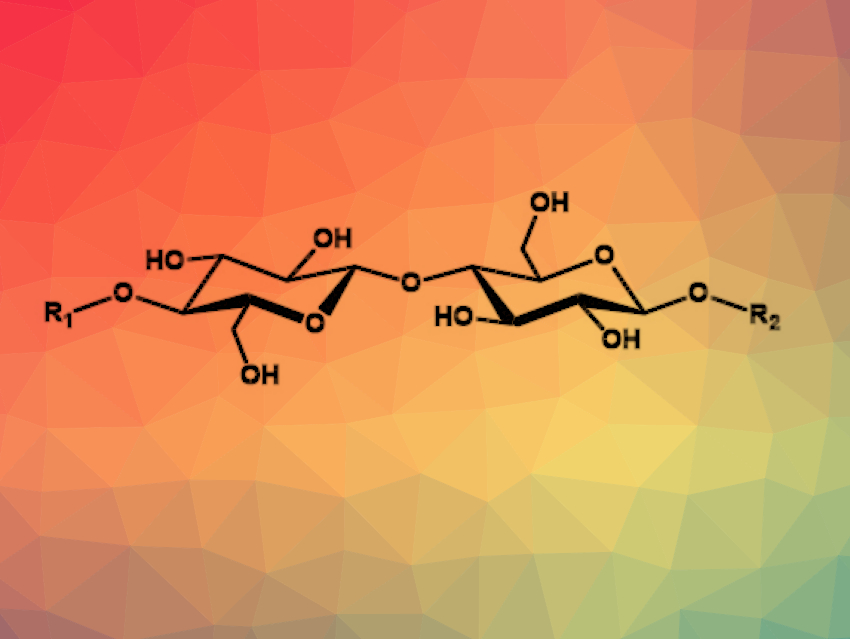Lytic polysaccharide monooxygenases (LPMOs) are enzymes that play a role in the degradation of hard-to-convert polysaccharides, such as chitin and cellulose. They can be useful, e.g., in biocatalysis and biorefinery processes. LPMOs catalyze a single regioselective oxidation of either the C1 or the C4 carbon of a glycosidic linkage in such polysaccharides. The destabilized linkage then breaks.
Mirjam A. Kabel, Wageningen University and Research, The Netherlands, and colleagues have discovered that a series of new C4/C6 double oxidized cello-oligosaccharides can be generated by LPMOs from cellulose. Cellulose was digested by LPMOs from different fungi and the products were characterized using a sodium borodeuteride reduction (pictured below) and mass spectrometric (MS) analysis. The reduction with NaBD4 reduces only one end of the oligosaccharides under addition of a deuterium atom and not the other, which allowed the team to tell apart oxidations in different positions that could not be distinguished otherwise in mass spectra.

The team found that the C4/C6 double oxidized products were generated by C4- and C1/C4-oxidizing LPMOs, but not by C1-oxidizing ones. The products have a gem-diol structure at the C6 carbon. Overall, the work provides new insights into the LPMO-mediated regioselective oxidation of cellulose.
- Regioselective C4 and C6 Double Oxidation of Cellulose by Lytic Polysaccharide Monooxygenases,
Peicheng Sun, Christophe V. F. P. Laurent, Vincent J. P. Boerkamp, Gijs van Erven, Roland Ludwig, Willem J. H. van Berkel, Mirjam A. Kabel,
ChemSusChem 2021.
https://doi.org/10.1002/cssc.202102203




